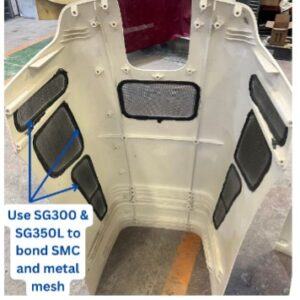by Taylor Santa, Technical Support Specialist
Many times, the component joining method is one of the last things engineers and designers think about when designing a structure or a product and might receive less attention than core materials selection or component design. However, taking the time to consider how to join parts and considering where to choose methyl methacrylate adhesive (MMA) technology can take designs to the next level in many ways:
Durability is often improved with the use of MMA instead of alternatives like fasteners or welding. MMA adhesives create a permanent bond with surfaces, becoming one with them. In many applications, base materials fail before the adhesive does. They have excellent impact resistance as well as bond strength, especially compared to pastes. Their chemical and environmental resistance is superior for polyurethanes for tough applications where ruggedness is required.
As designs evolve along with expectations for industrial design, aesthetics are more important than ever. Products are expected to have smooth, clean, visually pleasing lines. Compared to fasteners and welding, adhesives excel when it comes to aesthetics.
Sheer strength is another benefit that MMAs offer. Often when people think of a strong adhesive, their mind goes first to epoxy, but unfortunately, epoxies can be quite brittle, a detriment in applications like side panel bonding for a recreational vehicle (RV). MMAs combine flexibility and strength, reaching strengths up to 3000 psi and are excellent to fill gaps up to 2 inches (50mm), with special formulations offering even larger gap fill. And, they are strong in bonding a diverse range of materials, including plastics, metals, and composites.
To give you an idea, here’s a picture of a vehicle subassembly, bonding SMC and metal mesh using some of our SCIGRIP MMA products.

The best designs also consider the manufacturing process and how the part will be put together – see our blog post on Boosting Efficiency for more about how MMAs can improve efficiency. One final point – while it’s ideal to consider MMAs at the outset of a design, many assembly processes can be quickly and easily modified to use MMAs on existing designs as well.









